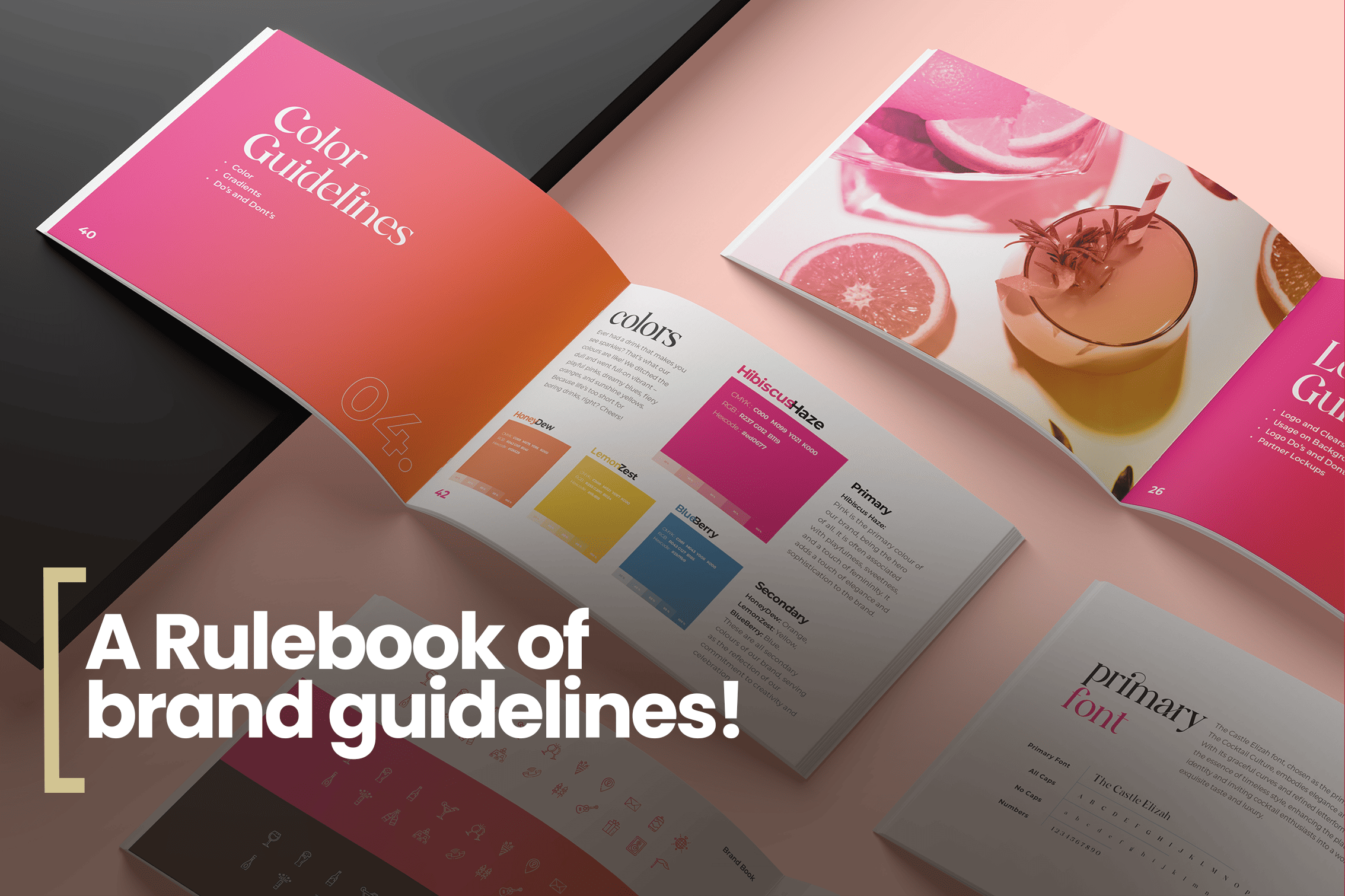
- Shreshtha Agarwal
Mogambo khush nahi hoga.
Neither will your brand manager, your agency, or the customers if your branding starts looking like a chaotic buffet of inconsistent logos, fonts, and colors.
Every agency has faced that client. The one who insists on “staying on brand” but also wants to “experiment” by throwing in a little bit of this, a little bit of that—until the brand starts looking like a Frankenstein creation of Pinterest trends and personal whims.
But the reason brand guidelines exist is simple: branding is not a democracy—it’s a dictatorship where consistency is the ruler.
What Are Brand Guidelines (With a Real-World Example)?
Brand guidelines, also called brand books or style guides, are the rulebook for a brand’s identity. They define how a brand should look, sound, and feel across all platforms and communications.
A great example? COCA-COLA.
Coca-Cola’s brand guidelines are a masterclass in consistency. They dictate:
- Logo Usage: The Coca-Cola script can never be altered, rotated, or placed in a box. The red disc must be used in a specific way.
- Color Palette: Their iconic Coca-Cola Red (Hex #F40009) is non-negotiable. Other reds? Not allowed.
- Typography: Coca-Cola primarily uses TCCC Unity, a custom font created specifically for the brand.
- Tone of Voice: The brand always communicates optimism, happiness, and togetherness—never sarcasm or aggression.
- Imagery Style: Coca-Cola ads always feature real moments of joy, never abstract visuals.
Because of these non-negotiable rules, Coca-Cola has remained one of the most recognizable brands for over a century. You could remove the logo, and you’d still recognize a Coca-Cola ad just by its color, font, and tone.
Now, contrast this with a brand that doesn’t enforce guidelines strictly—you’ll see a lack of recall, inconsistency, and weaker branding impact.
The Anatomy of Brand Guidelines (And Why They Aren’t Just Pretty PDFs)
Brand guidelines are not some over-glorified PowerPoint filled with color swatches and logo placements. They are the playbook, constitution, and survival manual of a brand’s identity. A well-defined set of brand guidelines ensures:
- Visual Consistency: Every touchpoint (social media, packaging, website, ads, in-store branding) looks and feels like it belongs to the same brand.
- Tone Consistency: The way a brand speaks remains uniform, whether it’s a snarky tweet or a heartfelt brand manifesto.
- Recognition & Recall: The human brain processes consistency faster. A well-defined brand identity sticks.
- Scalability: As brands expand to multiple markets and agencies, guidelines ensure uniformity across geographies.
- Efficiency: Design teams, ad agencies, and in-house teams don’t waste hours debating which blue shade “feels more premium.”
At its core, brand guidelines are the rules that keep branding from becoming a messy group project where everyone has “creative inputs.”
The Common Crimes Against Brand Guidelines (And Why They Lead to Disaster)
- The “Flexibility” Trap – Clients often mistake guidelines as guidelines instead of rules. A few minor deviations, and suddenly the brand is posting a Comic Sans quote in pastel pink. The result? Brand dilution.
- The Internal Sabotage – Marketing teams sometimes greenlight campaigns that “align with trends” but not with the brand. When a luxury brand starts cracking meme humor, the exclusivity dies.
- The Agency vs. Brand Tug-of-War – Agencies try to push boundaries; brands try to play safe. Without clear guidelines, the result is often a campaign that looks like an identity crisis.
- The “New Manager Syndrome” – A new brand manager arrives and decides to “redefine the brand” overnight without truly understanding its DNA. The result? Disorientation in the market and confusion among loyal customers.
What is The Role of Agencies?
For agencies, brand guidelines are both a blessing and a battlefield. While they create a clear framework, they also come with the constant challenge of maintaining balance between creativity and consistency.
When agencies enforce guidelines too rigidly: The brand risks becoming repetitive, predictable, and uninspiring.
When agencies ignore guidelines too liberally: The brand loses identity and trust.
The best agencies act as brand custodians, ensuring that any creative exploration still serves the brand’s core identity rather than diluting it.
Why Brand Guidelines Matter More Than Ever in the Digital Era?
Today, brands don’t just live in billboards and TV commercials—they exist in social media, digital ads, YouTube videos, podcasts, influencer partnerships, and more.
The sheer volume of content created daily makes brand dilution a real threat if brand guidelines aren’t enforced properly. A few reasons why they’re more crucial than ever:
1. Brand Feed Consistency
A brand’s Instagram feed isn’t just a collection of posts; it’s a portfolio. Scattered aesthetics, changing fonts, and inconsistent voice lead to an untrustworthy brand perception.
2. Niche Positioning
In saturated markets, a distinct brand identity is non-negotiable. The brands that own their niche (Nike, Apple, Chanel) stick to their guidelines religiously.
3. Omnichannel Experience
From e-commerce listings to influencer collaborations, maintaining brand uniformity across multiple digital touchpoints is the key to strong recall.
Our Take? When to Bend the Rules & When to Hold the Line
At Crewtangle, we live by one rule: Know the brand guidelines well enough to break them with purpose.
- We respect them, but we don’t worship them.
- We believe in structured rebellion—challenging the boundaries without destroying them.
- We know that a brand needs a strong foundation, but also breathing space for cultural relevance.
Because at the end of the day, brand guidelines aren’t a cage—they’re a compass. They help navigate creativity while ensuring the brand remains unmistakably itself.
So, the next time you’re tempted to tweak the logo “just a little” or switch fonts “for variety,” ask yourself—Mogambo khush hoga?
-
Content that rocks the world
06 November, 2020 -
Design: Bringing Ideas to Life
12 November, 2020 -
Whassup Bud: One of Budweisers’ Evergreen Television Ad Campaign
20 November, 2020 -
Brands must be Gods
27 November, 2020 -
The Deffective Dictionary
08 January, 2021





